|
Mexicali’s Curto Cinema Shines Again
By Maria E Curry
January/February 2023
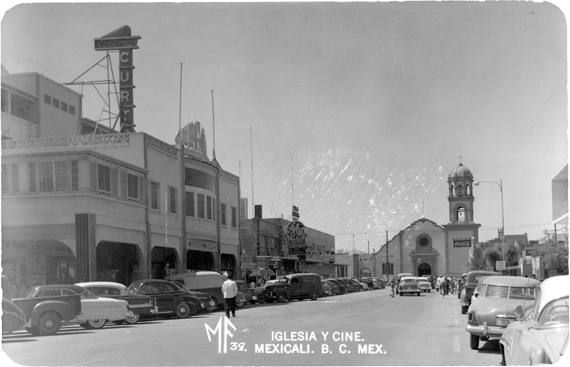 Historic photograph of Mexicali’s Curto cinema, built in 1946, shown here in 1954. The architecture includes simple art deco ornamentation, an asymmetrical main facade, two main levels, and a recessed third level. Photo courtesy Archivo Histórico de Baja California Sur Pablo L. Martínez
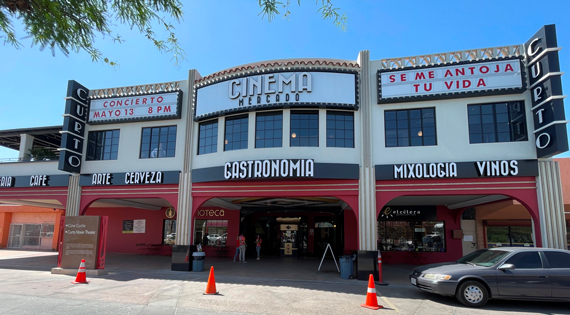 A recent view of the Cinema Mercado Curto after rehabilitation and adaptive reuse. The advertising and colors are not historic, although many of the original design features remain. At night, the building is illuminated by lights inside clear plastic tubes attached to the fluted pillars. Photo by Gabriel Rivera Delgado |
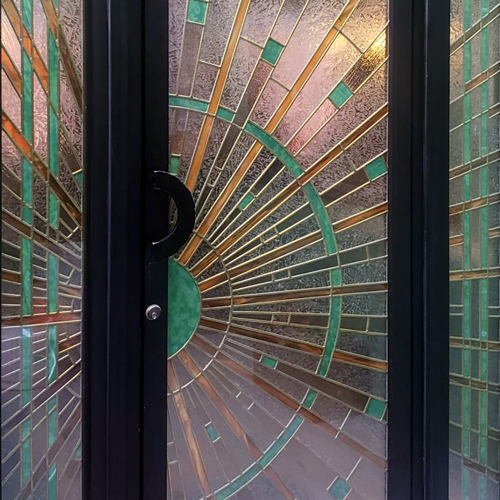 Some original windows, floors, murals, and ornamentation have been preserved, as seen in this second-floor stained-glass door. Photo by Maria Curry |
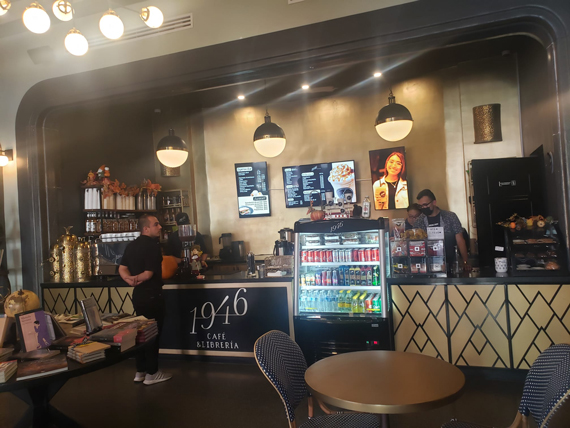 This new cafe is in the lobby of the remodeled Curto cinema. The renovated building also houses restaurants, a brewery, concert area, and the theater. Photo by Maria Curry |
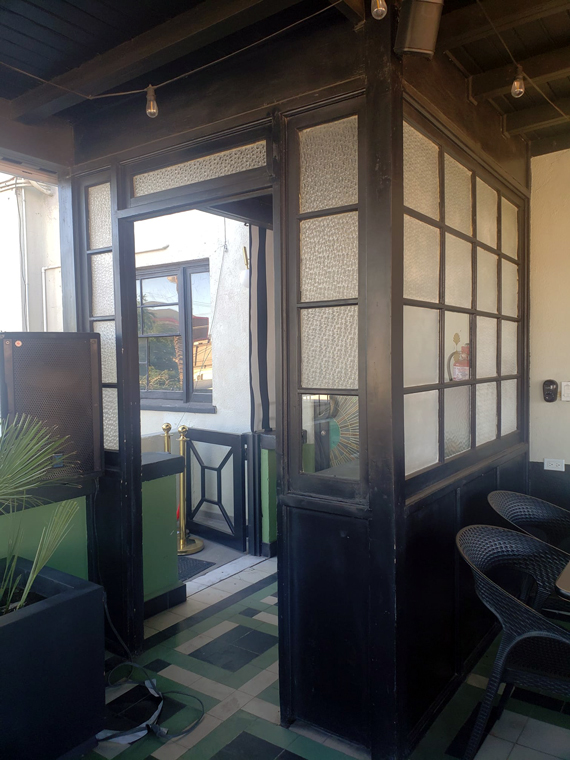 The owners lived in an apartment on the cinema’s second floor. Original glass, wood ceiling, and floor tile have been preserved. Photo by Maria Curry |
The 1946 Curto movie theater in downtown Mexicali was once the city’s largest and most comfortable building, with 1,700 seats, air conditioning, and beautiful murals. Now a lively mixed-use attraction, the restored and renovated landmark is expected to be designated soon as Baja California cultural heritage by the Consejo del Patrimonio Cultural de Baja California.
The theater is named for its owner, Adolfo Curto, who founded the company Empresa Teatral y Cinematográfica in 1920 and built Art Deco style movie theaters in Mexicali, Ensenada, and Tijuana.
Mexico City architect Mariano Benlliuri, Jr. and structural engineer José Aguirre de Campal designed the Curto with assistance from Paul Jeffers, a Los Angeles engineer. An expert in seismic safety, Jeffers did the very important structural calculations for the interior balcony.
The Curto is a three-level structure with an asymmetrical main facade, concrete roofs, and open terraces. The building has a portico on the first level with pillars supporting a concrete beam and roof. In addition to Art Deco design motifs, the architect blended elements of Art Moderne, Functionalism, and the International Style.
The theater became Mexicali’s most important entertainment venue. Famous actors such as Cantinflas, María Felix, and Pedro Infante added star power to the grand opening in 1946. Serving as an auditorium, the Curto also hosted political events, including the inauguration of Baja California’s first governor in 1953.
With heavy competition from video stores starting in the 1980s, the Curto closed in 1992. Except for a brief tenancy, the vacant building was soon overrun with mice and other vermin; rehabilitation teams later removed 15 tons of trash.
Baja California’s current governor and former Mexicali mayor, Marina del Pilar, helped initiate and support the Curto’s renaissance as part of a downtown redevelopment plan, starting in 2019. The renovation preserved some original features, such as murals by Mexicali artists and granite and tile floors. It reopened with a smaller theater and new amenities in 2021.
The old Cinema Curto sign came down and in its place is one that advertises the new Mercado Cinema Curto and its theater, restaurants, cafes, and a brewery. A new postmodern ticket booth resembles the old one and the fluted columns hold clear lighting tubes that illuminate the building at night and attract patrons.
The Curto is virtually the centerpiece of Mexicali’s historic downtown, which recently received a national tourism award. Designation of the building will help commemorate Mexicali’s 1940s-era entertainment and celebrate the successful economic revitalization of its historic downtown.
|
2025
2024
2023
2022
2021
2020
2019
2018
2017
2016
2015
|








